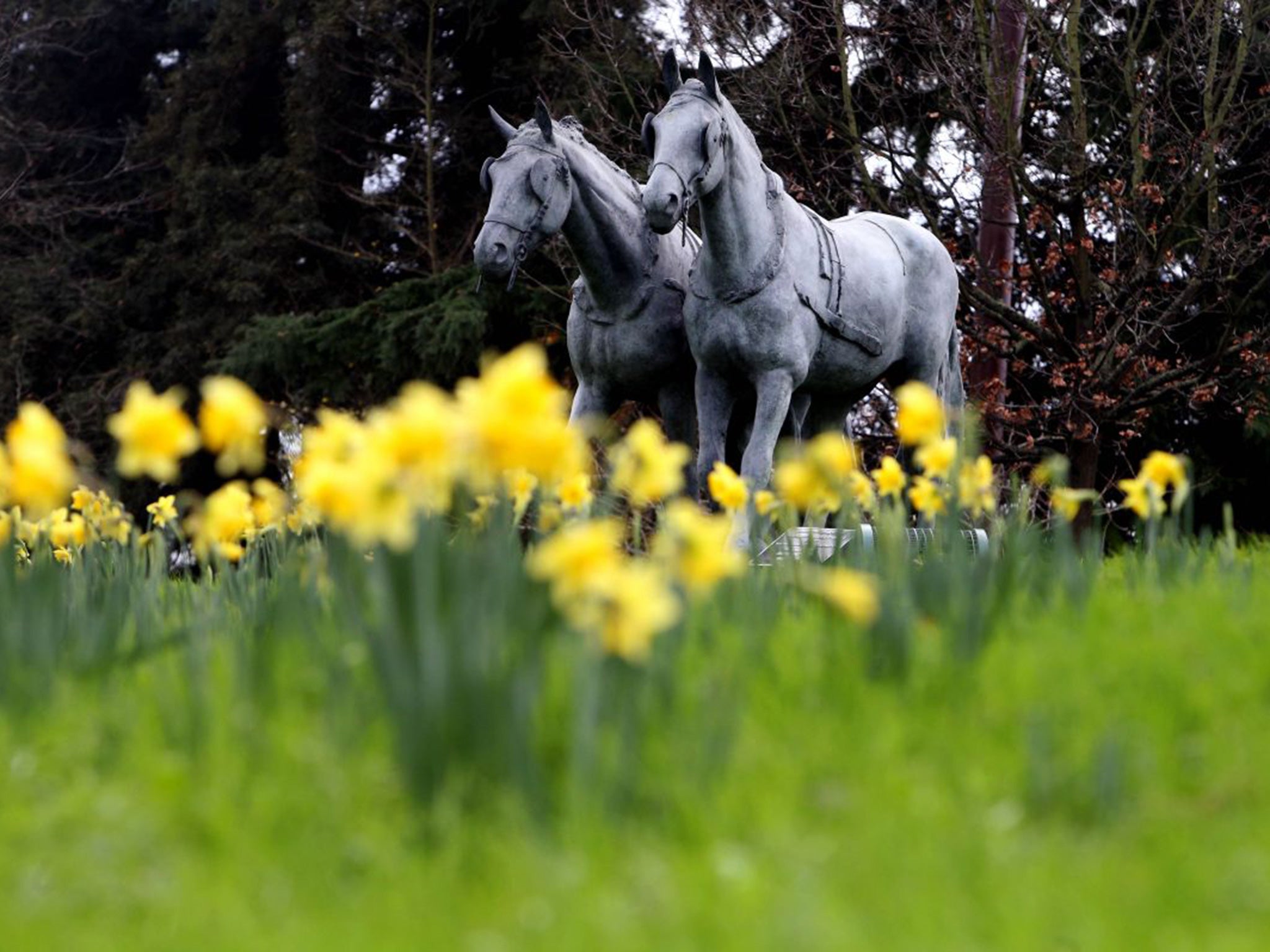Could daffodils in December mean misery in spring for Britain’s gardeners?
The unseasonably warm winter weather has thrown up some horticultural surprises

Your support helps us to tell the story
From reproductive rights to climate change to Big Tech, The Independent is on the ground when the story is developing. Whether it's investigating the financials of Elon Musk's pro-Trump PAC or producing our latest documentary, 'The A Word', which shines a light on the American women fighting for reproductive rights, we know how important it is to parse out the facts from the messaging.
At such a critical moment in US history, we need reporters on the ground. Your donation allows us to keep sending journalists to speak to both sides of the story.
The Independent is trusted by Americans across the entire political spectrum. And unlike many other quality news outlets, we choose not to lock Americans out of our reporting and analysis with paywalls. We believe quality journalism should be available to everyone, paid for by those who can afford it.
Your support makes all the difference.Keep calm and carry on. That’s the advice for worried gardeners – like me – from one of the nation’s top horticultural experts, as temperatures are forecast to remain in double figures throughout most of the UK during Christmas week.
British gardeners are used to grumbling. For us, the weather is always too hot, or too cold, or too windy, or too wet. The current mild spell, however, has turned this constant murmur of dissatisfaction into a crescendo of complaints as the unseasonably high temperatures result in a bizarre series of horticultural anomalies.
So why all the fuss? What’s wrong with a few early daffodils, or having to cut the lawn in December? The UK’s maritime climate allows us to grow a huge variety of plants, so isn’t it unreasonable to feel entitled to white Christmases and long hot summers as well?
Well, yes and no. Many of the plants we grow in our gardens – not to mention our woodlands, meadows and fields – have evolved to take advantage of temperature seasonality. They need a period of dormancy during the colder months in the same way that we need a decent night’s sleep in order to perform well the following day.
Guy Barter, chief horticultural adviser at the Royal Horticultural Society, admits that he cannot remember a winter when there were so many plants flowering out of season. He is based at the RHS’s garden at Wisley in Surrey, where even some of the apple trees are throwing out blossom.
For fruit trees, a period of dormancy is not just desirable but vital, and the hardier the plant, the longer the chill time it needs. Figs, for example, need 300 or fewer chill hours (when the temperature is between 0-7C), but blackcurrants can require up to 2,000 chill hours, depending on the variety.
The UK has 40 commercial blackcurrant growers, between them producing about 14,000 tons of fruit each year, mainly for Ribena. The outdoor thermometer in my garden in the Cotswolds read 11C at dawn yesterday morning, and while for me this is a intriguing statistic with which to bore my neighbours, for blackcurrant grower Jo Hilditch, in the neighbouring county of Herefordshire, it is a huge worry.
What about all the early daffodils? Does that mean there won’t be any daffodils come spring? I have Narcissus “Cragford” coming into flower in my garden, a white-petalled multi-headed Tazetta variety with orange centres, which normally flowers in March or April.

“That is unusual,” said Guy Barter, “because it is mainly the varieties that flower early that are in bloom now. There is no sign of the later flowering daffodils at Wisley yet.
“There is certainly much more in flower than usual. Here at Wisley, there are spring-flowering viburnums as well as the winter-flowering varieties, and we even have amelanchier in bloom. We’ve also noticed that shrubs have hung on to their foliage for longer too – the parrotia [Persian ironwood] still has all its leaves.”
“Keep calm and carry on gardening” would sum up Mr Barter’s advice. “There is nothing we can do about the weather, but on the other hand, it is nice to be able to get on and do things in the garden without having to put on heavy jackets and thick gloves and so on. Lawns are still growing fast, and our turf-care teams have been out mowing. The winter-flowering plants such as hellebores, witch hazels, winter-flowering rhododendrons and daphnes are putting on a terrific show, and the weather is mild enough to go out and enjoy it.”
If you’re planning to take winter walks over the Christmas period, try looking out for unseasonal oddities. I have hawthorn in flower near my house, while Greg Power, head gardener at Sezincote, near Moreton-in-Marsh, reports that his ceanothus (Californian lilac) is already in bud – it normally flowers in late May. Examples like this might be unusual but they are not unheard of, says Guy Barter. “And if things do get a little out of their usual pattern, they will be back to normal within a season.”
Victoria Summerley’s latest book is ‘Great Gardens of London’, published by Frances Lincoln, price £30.
Join our commenting forum
Join thought-provoking conversations, follow other Independent readers and see their replies
Comments